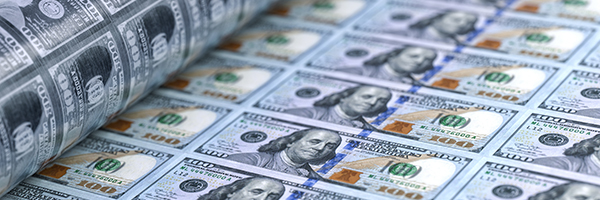Today, Wednesday December 29, the yield on the 10-year Treasury is up 6 basis points to 1.54% and is now up 60 basis points in the last year.
You sure could see this as evidence that yields are headed toward the magical 2% level in 2022.
But we’re been here before in 2021.
In fact yields on the 10-year Treasury have been higher. Back on March 31, for example, the yield on the 10-year Treasury hit its high for the year of 1.765%. (The low for 2021 came on January 4 at 0.917%. We revisited that territory on January 27 at 1.014% and on August 2 at 1.174%.)
Everyone on Wall Street is expecting that the Federal Reserve will end its bond purchasing program in March and that it will raise its benchmark short-term rate, now in a range of 0% to 0.25%, shortly thereafter.
From here, longer-term yields, like those on the 10-year Treasury, are likely to respond more to inflation than to those well-known plans at the Federal Reserve. If as the Fed used to argue, inflation of 6.8% in November starts to moderate (because it is indeed transitory), then 10-year yields are likely to stay in the range set in 2021 to date.
Wall Street seems comfortable with the thesis that a 10-year rate of 2% or less isn’t likely to hurt stocks much because at that level or lower the 10-year bond simply doesn’t offer investors enough incentive to move out of stocks. (Especially with the prospect that Federal Reserve interest rate increases could take a bit out of Treasury prices.)
There’s good logic behind that view. The dividend yield on the stocks in the Standard & Poor’s 500 is just 1.38% so on that basis the 10-year Treasury is a slightly more attractive proposition.
But if you look at a measure called earnings yield–which captures the anticipated earnings growth of the 500 stocks in the index by totaling the earnings per share for the underlying S&P 500 companies and then dividing by the S&P 500 index level–you come away with a conviction that stocks are a better investment than bonds. The earnings yield for the S&P 500 on December 24, as calculated by Yardeni Research, was 4.49%.
And if you’re an investor worried about inflation that, rather than dividend yield, is the measure that counts right now.
At least if you want to justify holding stocks and support your belief that stocks are headed higher in 2022.


